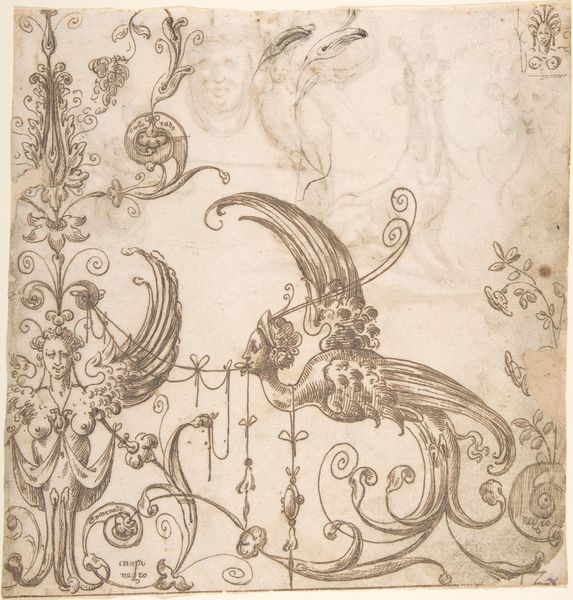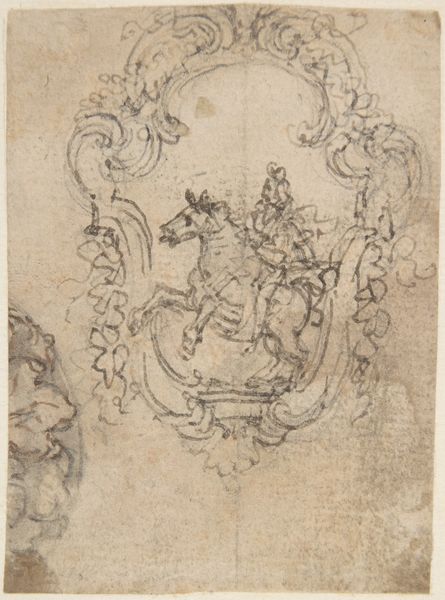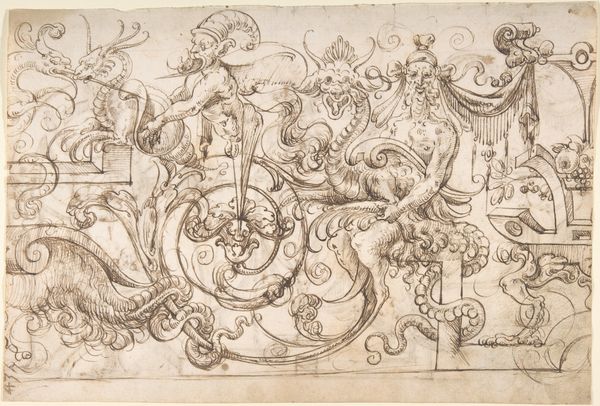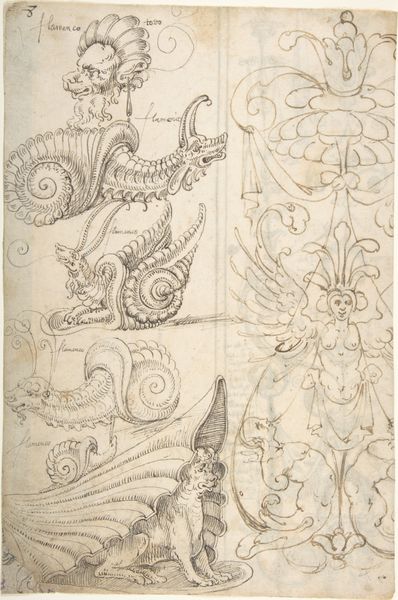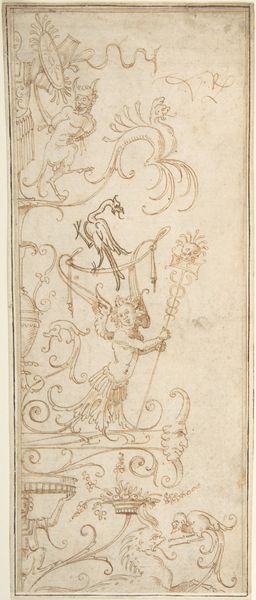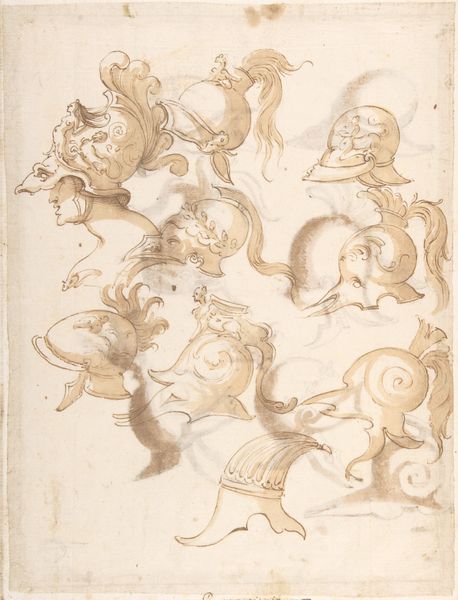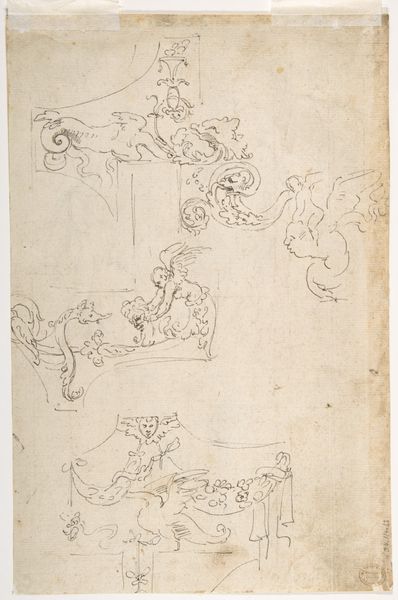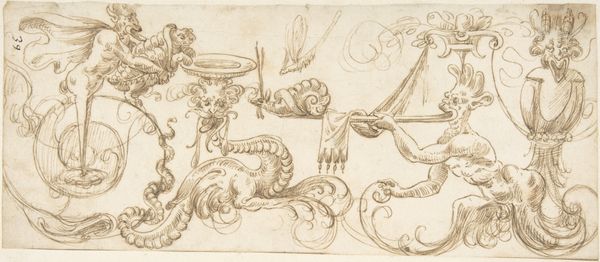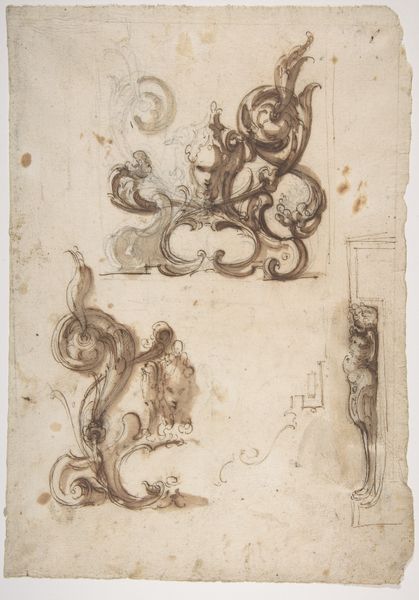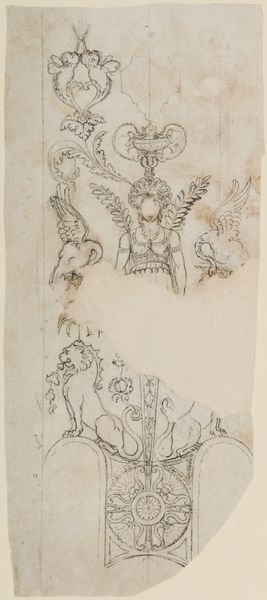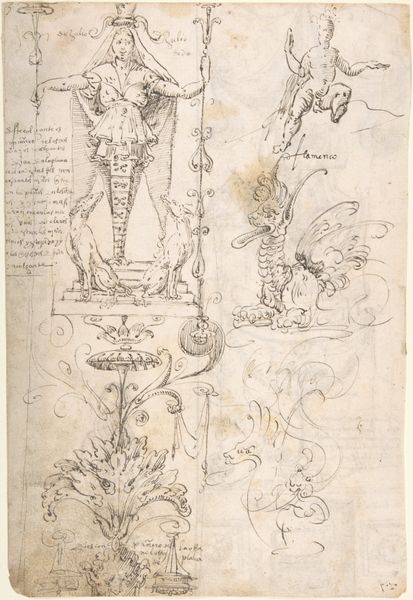
Fantastical creatures, birds, and strapwork cartouche (recto); grotesque mask and kneeling priest (verso) 1540 - 1550
0:00
0:00
drawing, print, ink, pen
#
drawing
#
ink painting
# print
#
bird
#
figuration
#
11_renaissance
#
ink
#
pen-ink sketch
#
pen
Dimensions: 13-1/4 x 8-9/16 in. (33.7 x 21.7 cm)
Copyright: Public Domain
Editor: Here we have a pen and ink drawing from the mid-16th century, sometime between 1540 and 1550, by Andrés de Melgar, titled “Fantastical creatures, birds, and strapwork cartouche (recto); grotesque mask and kneeling priest (verso)”. It feels like a flurry of images, fantastical beings sketched onto the page. How do you interpret the meaning behind these strange creatures? Curator: Looking at this drawing through a contemporary lens, I’m struck by how these fantastical creatures embody the anxieties and power dynamics of the Renaissance. These hybrid forms, part bird, part something else entirely, were born from a period of intense social upheaval fueled by religious reform and nascent colonialism. How might these mythical beasts reflect the disruption and re-shaping of identity occurring at that time? Editor: That’s an interesting perspective! I hadn't thought of it that way. It makes me consider how the grotesque mask and kneeling priest on the verso could also reflect that era of change. Curator: Precisely! The juxtaposition of the sacred and the profane reflects the period's shifting values. Melgar perhaps uses these figures to question authority, prompting us to examine the power structures embedded in society. Does that resonate with you? Editor: It definitely does. It gives a voice to those silent figures from history. I am curious, by employing such critical theory, are we projecting our contemporary concerns onto the artwork? Curator: It's a risk, but I believe we can use theory to deepen our understanding and initiate dialogue. The key is to use it as a tool, not a dogma, to bring these figures into conversations that expand our present understanding of social identity. Editor: That’s very insightful. It really highlights the importance of questioning established norms in art and beyond. Curator: Absolutely. Art like this challenges us to confront our own assumptions, paving the way for more equitable interpretations.
Comments
No comments
Be the first to comment and join the conversation on the ultimate creative platform.
